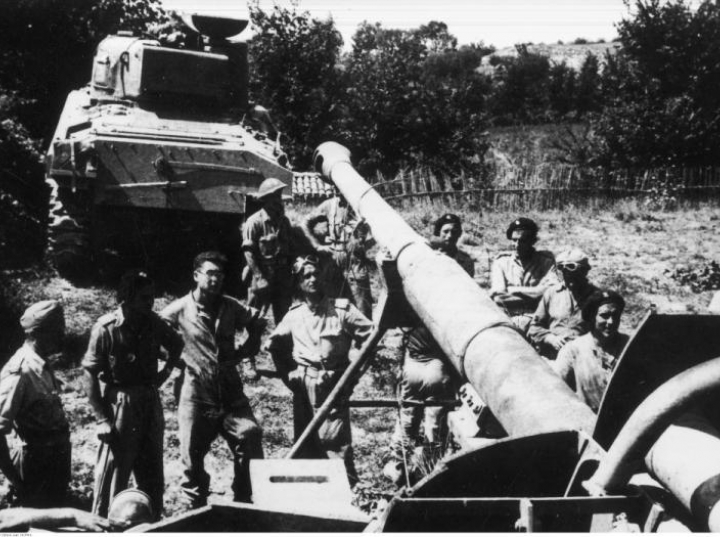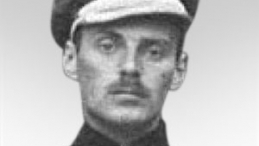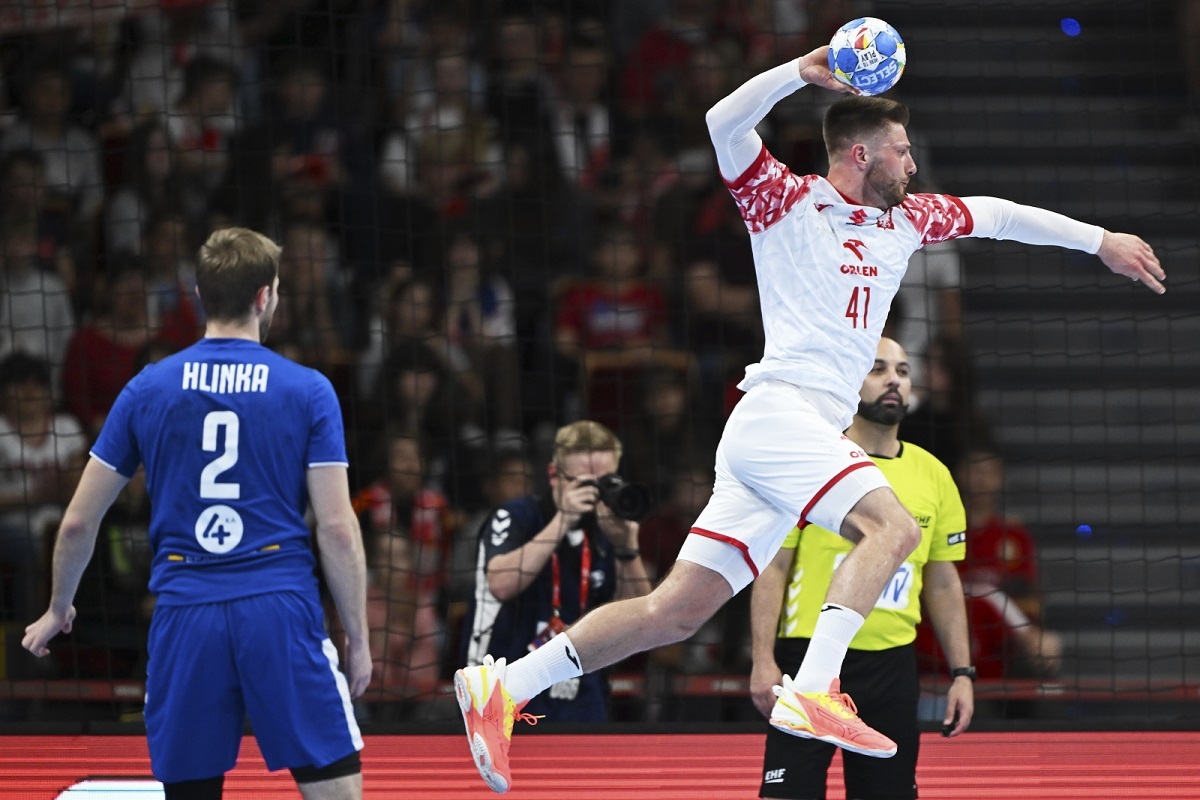80 years ago, on July 21, 1943, by order of the Commander-in-Chief, General Władysław Sikorski, who had died a few days before, the 2nd Polish Corps was created. He was called “the army of exiles”, which went down in history thanks to his heroism at Monte Cassino.
“Soldiers of September 1939, Norwegian and French campaigns of 1940 met in one line, prisoners of Soviet labor camps, defenders of Tobruk” – told PAP in 2017 military historian Prof. Zbigniew Wawer. The 2nd Polish Corps was one of the most complex and diverse parts of the Polish Armed Forces during World War II. Its essence consisted in the Polish citizens who were released from Soviet prisons after the signing of the Sikorski-Mayski Agreement on July 30, 1941 and the restoration of diplomatic relations between Poland and the Soviet Union, which had been severed after September 17, 1939. Thanks to this, it became possible to create a Polish Army in the East in the USSR.
“Soldiers of September 1939, Norwegian and French campaigns of 1940 met in one line, prisoners of Soviet labor camps, defenders of Tobruk” – told PAP in 2017 military historian Prof. Zbigniew Wawer. 2
It was hosted by General Władysław Anders, who was released from a Moscow prison. Despite the difficulties with supplies and equipment, and the fact that the Soviets made it difficult for the Poles to reach the recruiting point, both soldiers and civilians came to Anders’ troops en masse. In total, about 115,000 people signed up. people, including about 78.5 thousand soldiers.
However, with the increase in the number of troops and the increasing number of Polish civilians who came to the places of formation of the army, the supply problem became more and more serious. Meanwhile, the Soviets not only kept food rations out of the Polish army, but also reduced them. Polish soldiers lived in tents in a 40-degree frost, dressed in rags, and rags replaced their shoes. There was a famine. This led to the decision to evacuate troops to the Middle East. British politicians and the military had no doubts about the fate of most Poles if they had stayed longer in the Soviet Union. “The Russian people despise the value of human life from the East, are almost incomprehensible to Westerners, and killing several thousand Poles – not to mention the fact that the victims are supposed to be + class enemies + who contemptuously reject any attempt at Marxist indoctrination – will not matter to them,” said General Noel Mason-MacFarlane.
The first 33,000 people left for Iran in March 1942, the rest joined a few months later. The general himself left at the end of August 1942. The physical state when the Poles arrived in Iran was dramatic, but their hopes for a future outside the “inhuman land” and morale were high. “A smiling Polish major with a close-cropped beard, in a tight-buttoned British field uniform, stepped out of a Russian boat in the port of Pahlevi on the Caspian Sea, saluting a high-ranking British officer waiting ashore: +A Polish officer from Russia reported,+ he spoke perfect English, +waiting for further orders+. This scene was accompanied by loud cheers, as thousands of Polish soldiers watched from the decks of Soviet ships, eager to see the first to walk on free land, wrote a British press correspondent in April 1942. Polish soldiers were accompanied by thousands of exhausted civilians who in the Middle East in the following months created a replacement for an independent Poland with its own press, education, theatre, and scouting teams. Many recovered in internment camps from Mexico to New Zealand.
The first 33,000 people left for Iran in March 1942, the rest joined a few months later. The general himself left at the end of August 1942. The physical state when the Poles arrived in Iran was dramatic, but their hopes for a future outside the “inhuman land” and morale were high.
However, the new army under construction will take months to build up to its combat potential. “Occasionally, upon arrival in Tehran, people would die from exhaustion and hunger prolonged during the two years of their stay in Soviet Russia. Within weeks, a forest of more than a thousand crosses covered the Polish cemetery in Tehran. My pre-war aide and close friend, Lieutenant Zygmunt Kostakiewicz, also died, miraculously making his way out of the Soviet labor camp,” General Anders wrote. After several months of training in the deserts of Iran and Iraq and rebuilding troops, Stefan Kleczkowski, a former correspondent for the Warsaw Daily Mail, noted one British commander as saying of the Polish army: “They are tough as nails, and their discipline is extraordinary.”
In February 1943, the Third Reich’s crushing defeat at Stalingrad meant that the risk of German troops crossing the Caucasus and moving the war to the Middle East was finally gone. The next Allied goal was to open a new front in Italy. Polish soldiers continued their training in extreme conditions. In June and July 1943, due to hot weather, time spent on the field was limited to a maximum of 4 hours. Hospitals are overcrowded with malaria and sunburn. During his trip to the Middle East in June 1943, General Sikorski obtained permission to deploy Polish troops to a more hospitable Palestine. During the disastrous passage to Gibraltar, Sikorski also made the final decision regarding the transformation of the Polish Army in the East into the 2nd Polish Corps. Shortly after the disaster, in a situation of dramatic conflict with the government of Stanisław Mikołajczyk, Anders began carrying out orders to organize the 2nd Polish Corps. Ultimately, it would become a tactical formation consisting of three divisions – the 3rd Carpathian Rifle Division, the 5th Kresowa Infantry Division and the 2nd Warsaw Armored Division – and an artillery corps grouped in the 2nd Artillery Group. The new organizational structure went into effect on July 21, 1943, along with the order for the formation of the 2nd Corps. The formations numbered around 50,000. soldier.
In the summer of 1943, the 2nd Corps redeployed to southern Palestine. The 1st Carpathian Rifle Brigade was sent to the mountains of Lebanon, where it prepared for operations in difficult terrain. The other carried out a gigantic maneuver in October 1943, codenamed Bravery, located in the triangle between Tel Aviv, Jerusalem and the Sea of Galilee.
On September 3, 1943, Allied troops landed in the south of the Italian Peninsula. After the initial successes, it became clear that the Germans were well prepared to hold off the Allied advance north for an extended period. By November, the bulk of the 2nd Corps troops reached Egypt, and by the end of the month they had begun being pushed to the south of Italy. On December 20, 1943, Polish troops from the 1st Independent Commando Command clashed with German troops for the first time at the Sangro River.
The most famous page in its history was written by the 2nd Corps in May 1944 with the capture of the German fort in the ruins of Monte Cassino, defending access to Rome. In the fighting, 923 Polish soldiers were killed, 2,931 were injured, and 345 were reported missing. Their trail later led through Ancona, Loreto and Bologna.
The most famous page in its history was written by the 2nd Corps in May 1944 with the capture of the German fort in the ruins of Monte Cassino, defending access to Rome. In the fighting, 923 Polish soldiers were killed, 2,931 were injured, and 345 were reported missing. Their trail later led through Ancona, Loreto and Bologna.
After the war ended, the Corps remained with the occupying forces in Italy. In 1946, he was demobilized and the army transported to Great Britain, where the British formed the Polish Adaptation and Deployment Corps for the PSZ army. After this formation was disbanded, most of the soldiers of the 2nd Corps remained in exile due to the political situation in the country.
This was also done by General Anders, who remained in exile, which contributed to the fact that in 1946 the communist authorities stripped him of his Polish citizenship and cut his general. He died on May 12, 1970, and was buried in Italy, at the Polish War Cemetery near Monte Cassino, next to his soldiers from the 2nd Corps.
Author: Michał Szukała
search/ skp/

“Reader. Future teen idol. Falls down a lot. Amateur communicator. Incurable student.”






